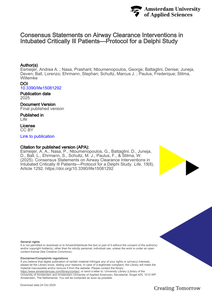Background: Cardiac output measurements may inform diagnosis and provide guidance of therapeutic interventions in patients with hemodynamic instability. The FloTrac™ algorithm uses uncalibrated arterial pressure waveform analysis to estimate cardiac output. Recently, a new version of the algorithm has been developed. The aim was to assess the agreement between FloTrac™ and routinely performed cardiac output measurements obtained by critical care ultrasonography in patients with circulatory shock.Methods: A prospective observational study was performed in a tertiary hospital from June 2016 to January 2017. Adult critically ill patients with circulatory shock were eligible for inclusion. Cardiac output was measured simultaneously using FloTrac™ with a fourth-generation algorithm (COAP) and critical care ultrasonography (COCCUS). The strength of linear correlation of both methods was determined by the Pearson coefficient. Bland-Altman plot and four-quadrant plot were used to track agreement and trending ability.Result: Eighty-nine paired cardiac output measurements were performed in 17 patients during their first 24 h of admittance. COAP and COCCUS had strong positive linear correlation (r2 = 0.60, p < 0.001). Bias of COAP and COCCUS was 0.2 L min-1 (95% CI - 0.2 to 0.6) with limits of agreement of - 3.6 L min-1 (95% CI - 4.3 to - 2.9) to 4.0 L min-1 (95% CI 3.3 to 4.7). The percentage error was 65.6% (95% CI 53.2 to 77.3). Concordance rate was 64.4%.Conclusions: In critically ill patients with circulatory shock, there was disagreement and clinically unacceptable trending ability between values of cardiac output obtained by uncalibrated arterial pressure waveform analysis and critical care ultrasonography.Trial registration: Clinicaltrials.gov, NCT02912624, registered on September 23, 2016.
DOCUMENT
Intubated critically ill patients are susceptible to secretion accumulation because of compromised airway clearance. Various airway clearance interventions are employed to prevent complications arising from mucus retention. This Delphi study aims to collect global opinions in an international expert panel of ICU professionals on the usefulness of these various airway clearance interventions. A steering committee performed a literature search informing the formulation of statements. Statements are grouped into two distinct parts: (1) Humidification and Nebulization, and (2) Suctioning and Mucus mobilization techniques. For each part, a diverse panel of 30–40 experts will be selected, with concerted effort to involve experts from various medical specialties involved in airway clearance methods. Multiple choice questions (MCQs) or 7-point Likert-scale statements will be used in the iterative Delphi rounds to reach consensus on various airway clearance interventions. Rounds will continue until stability is achieved for all statements. Consensus will be deemed achieved when a choice in MCQs or a Likert-scale statement achieves ≥75% agreement or disagreement. Starting from the second round of the Delphi process, stability will be assessed using non-parametric χ2 tests or Kruskal–Wallis tests. Stability will be defined by a p-value of ≥0.05.
DOCUMENT

Abstract Background: Children and adolescents in mental healthcare often perceive their care needs and necessary treatment differently from their clinicians. As such discordance between young patients and clinicians may obstruct treatment adherence and compromise treatment outcomes, it is important to understand the factors associated with it. We therefore investigated the factors associated with patient–clinician discordance with regard to care needs in various areas of functioning. Methods: A cross-sectional study involving 244 children/adolescents aged 6–18 participating with their clinicians in treatment at a specialized mental healthcare center. As a previous study conducted by our research group had found the greatest patient–clinician discordance in three CANSAS care needs—“mental health problems,” “information regarding diagnosis and/or treatment,” and “making and/or keeping friends”—we used univariable and multivariable statistics to investigate the factors associated with discordance regarding these three care needs. Results: patient–clinician discordance on the three CANSAS items was associated with child, parent, and family/social-context factors. Three variables were significant in each of the three final multivariable models: dangerous behavior towards self (child level); severity of psychiatric problems of the parent (parent level); and growing up in a single-parent household (family/social-context level). Conclusions: To deliver treatment most effectively and to prevent drop-out, it is important during diagnostic assessment and treatment planning to address the patient’s care needs at all three levels: child, parent and family/social context.
DOCUMENT
